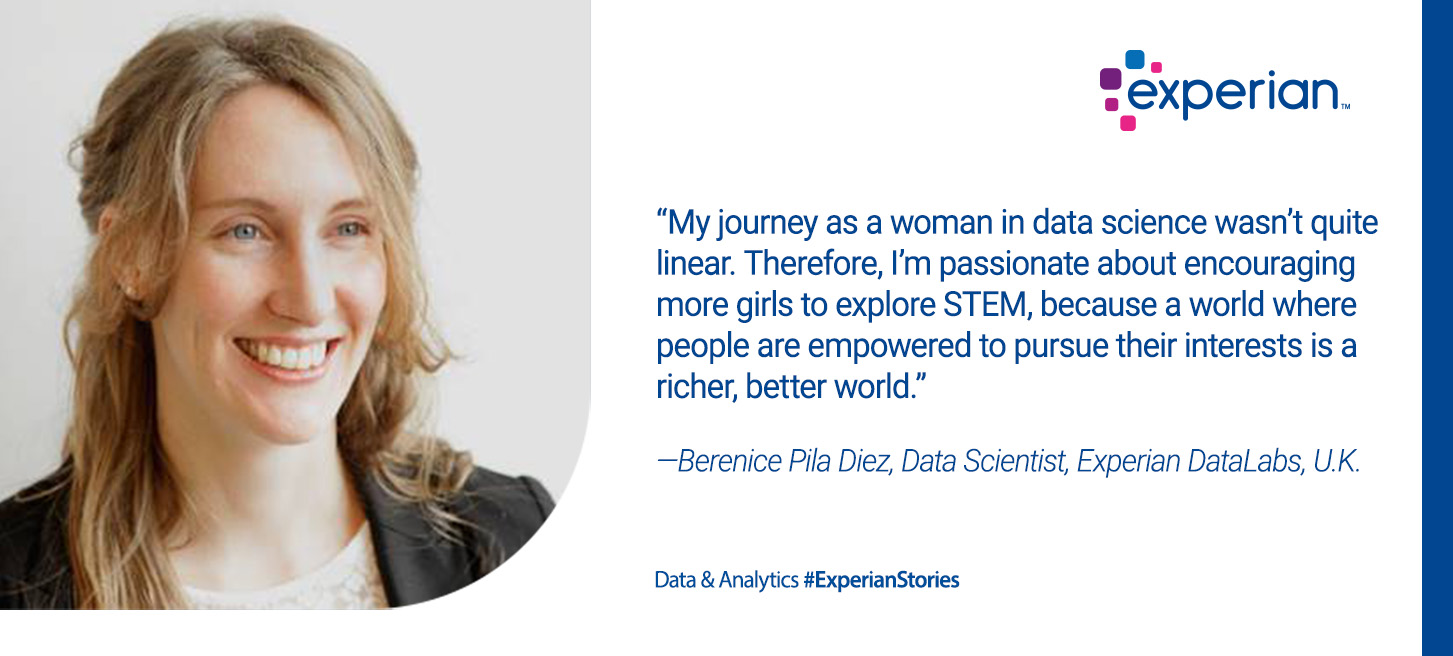 Believe it or not, my personal journey as a woman in data science started with physics. I was always very curious by nature and tried to understand what happens around me.
Believe it or not, my personal journey as a woman in data science started with physics. I was always very curious by nature and tried to understand what happens around me.
I studied for both a master’s in physics in Spain and a Ph.D. in astrophysics in the Netherlands before making my shift from academia to industry (first in a Big Four consultancy and later in Experian). Gradually, I realized that I liked the academic side of working with data and applying the scientific method to solving problems, but I wanted to do something faster-paced that had more tangible impact. So, before finishing my Ph.D., I joined a data boot camp to further develop my skills, and after defending my thesis I transitioned to data science. Now I’m a full-fledged data scientist at Experian DataLabs.
The world is at a very interesting time in terms of technology and innovation, and STEM fields are only going to continue growing. As a data scientist myself, I may be biased, but I think the future of this field is particularly interesting. I can see data being applied in such a variety of ways – from self-driving cars to early medical diagnoses and beyond. In fact, I don’t see the momentum slowing down any time soon, which means that data scientists will continue to be in high demand. I want to do something about the disproportionate amount of men to women in science, showing girls that STEM is for them, too.
There’s no quick-fix solution, but I think it’s essential to start educating girls when they’re young about STEM – both at home and in school. Young girls should be encouraged to be curious, to try and fail! For me, data science isn’t about getting it right the first time; it’s about the path of discovery and innovation along the way. The sooner and the longer that girls are encouraged to explore and play with less-conventional toys, like computer games, construction toys or logic puzzles, the likelier they may be to choose careers based on what they personally enjoy doing and not what society expects them to do. Gender stereotypes can be really constraining, especially for children.
So, what can a diverse workforce offer that a narrow one can’t? The answer is easy: different approaches, different views and different solutions. With more women in fields like data science, everyone benefits. No one should have to automatically rule themselves out of a career path based on gender.
